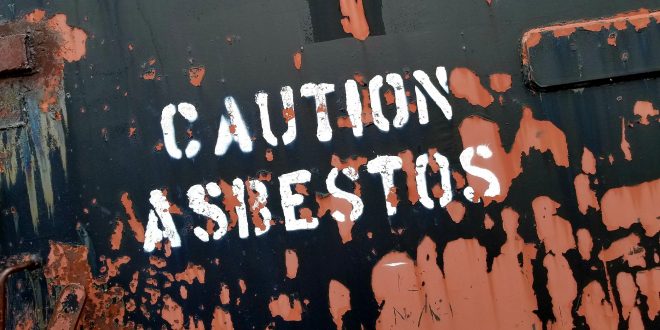The environment probably isn’t the first thing you think of when you hear “asbestos,” as people have long associated it with health issues. But it makes sense that such hazardous material has ecological consequences. Construction companies once lauded it for its helpful building capabilities, but it fell out of favor when workers became ill.
Mesothelioma and lung scarring aren’t the only adversities that occur because of this fibrous material. It can also affect the water you drink and the soil you walk on. Though its influence reaches far, it doesn’t have to prove dangerous as long as you stay informed.
The Dangers of Asbestos
Asbestos became a popular building material in the late 1880s because of its accessibility and durability. It wasn’t unusual to find it in walls, flooring, roofing and much more. However, its cancer-causing qualities turned it into a safety hazard and prompted contractors to stop creating structures containing the material.
This substance still exists in many buildings today despite its discontinuation because removal isn’t always worth the health risk. If someone disturbs or tears the material, its fibers enter the air and subsequently harm their lungs. These fibers are difficult to get rid of and invisible to the human eye, and eliminating the material itself doesn’t always extinguish the threat.
Asbestos harms the environment in ways you may not initially consider. It’s easy for particles to enter water supplies and contaminate drinking water. If the wind spreads these fibers, they sit on top of the soil instead of absorbing into the ground, leaving them open to further expansion. Humans and animals can breathe in these microscopic bits and develop illnesses, even if the symptoms don’t manifest until later.
Its Presence in the Environment
The Safe Water Drinking Act dictates that water management facilities must test their H2O and inform citizens of harmful substances. If asbestos existed in your water, you would likely already know. However, agencies don’t always do a perfect job of keeping residents safe. You can use an at-home testing kit to check the asbestos levels in your water if you’re still concerned.
Natural disasters like earthquakes and floods can disturb asbestos deposits, sending the material into groundwater sources and soil. Perform a water quality check after every disaster if you live near deposits. Doing so will ensure that your supply is free of contaminants.
It’s tricky to detect asbestos in soil, meaning it can cause health problems for a long time without anyone discovering the source. Scientists continually work to develop more accurate ways of measuring the substance, including transmission electron microscopy and fluidized bed segregation. Researchers use tools called segregators to separate solids by arranging their particles by size.
Ongoing Maintenance
If your home or office building contains asbestos, conduct regular inspections to make sure it hasn’t begun deteriorating. It’s reasonably safe to be around as long as the fibers haven’t worn out. If you do decide to remodel and remove the material, have a licensed professional do the job to avoid spreading more particles than necessary.
Many older homes had cement pipes containing asbestos, which is how it often entered people’s drinking water. You don’t have to worry about this piping if your home is new, but some old buildings may still have it. In such a case, you’re better off replacing your plumbing system with updated pipes. Installing a new system will protect inhabitants and align with current building codes.
Construction companies often added asbestos to roofs, attics and walls too. Asbestos-cement shingles withstood insects, fire and warping — unlike wood and slate — making them the first choice for contractors and landowners. Having them on your house may not be worth the advantages, however, because of the numerous risks and constant need for inspection. Switching them out for modernized shingles will protect your family and the surrounding environment.
Safeguarding Your Health and Local Ecosystems
Most people won’t encounter asbestos in their homes or workplaces because of its discontinuation, but the environmental effects are still real. Educating people on the ecological consequences will help them take greater care to avoid the material or remove it if possible. With so many pollutants in the atmosphere, every effort to eliminate dangerous materials counts toward global safety and health.



